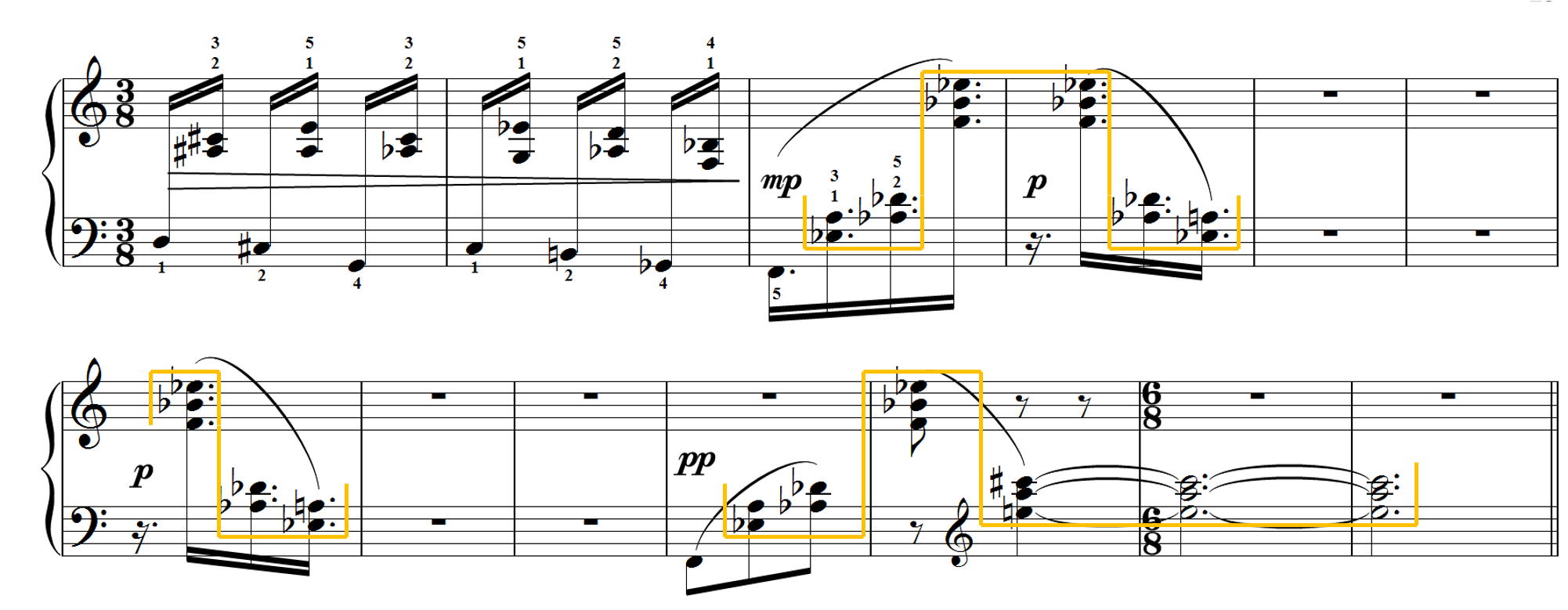“The numerous instances like these throughout the movement free up the right hand to be more legato and to more easily follow the melodic inflection.”
Submitted by Bill Brown with thanks to Menahem Pressler
Published on 5/15/2020

“The numerous instances like these throughout the movement free up the right hand to be more legato and to more easily follow the melodic inflection.”
Submitted by Bill Brown with thanks to Menahem Pressler
Published on 5/15/2020

“The numerous instances like these throughout the movement free up the right hand to be more legato and to more easily follow the melodic inflection.”
Submitted by Bill Brown with thanks to Menahem Pressler
Published on 5/15/2020

“The sixths are more legato when taken with two hands.”
Submitted by Michael Clark
Published on 4/13/2020

Submitted by Timothy Jones
Published on 10/5/2023

“This fingering allows for a break in the slur between mm. 5 and 6. It should not sound like the figure is being slurred over the bar.”
Submitted by Timothy Jones
Published on 10/5/2023

“Using this fingering allows for the break of the slur over the bar line, which in turn allows the singer to prepare for the major sixth ascending leap to their higher register and place the downbeat.”
Submitted by Timothy Jones
Published on 10/5/2023

“Here are fingering options for both m. 16 and m. 17:
M. 16: Using the same fingering for all of the 4ths, specifically with LH 1 and 4, allows for a resonant, bell-like sound that differs from any sound created with the right hand (perhaps it has to the with the placement of the thumb).
M. 17: Although uncomfortable at first, this allows for proper and organic execution of the tricky two note slur.”
Submitted by TImothy Jones
Published on 10/5/2023

“This fingering allows for the hands to keep grounded in the keys at all times, thereby preventing these chords from sounding like a portato articulation vs the legato that is written. If unlear, the LH is essentially switching fingers, using the note G as a pivot between the two chords.”
Submitted by Timothy Jones
Published on October 5, 2023

“I prefer this hand-over-hand arrangement.”
Submitted by Michael Clark
Published on 3/15/2020

“Taking these notes in the left hand provides better balance between the hands and gives relief to the right hand’s constant motion.”
Submitted by Bill Brown with thanks to Menahem Pressler
Published on 5/14/2020

“Taking these notes in the left hand provides better balance between the hands and gives relief to the right hand’s constant motion.”
Submitted by Bill Brown with thanks to Menahem Pressler
Published on 5/14/2020

“The F-flat and D can be played with the left-hand thumb to facilitate a legato melody.”
Submitted by Michael Clark
Published on 4/13/2020